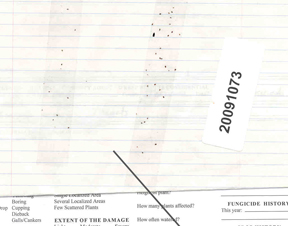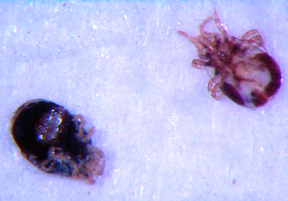Sharing a bed with bird mites
Editor’s note: This article is from the archives of the MSU Crop Advisory Team
Alerts. Check the label of any pesticide referenced to ensure your use is
included.
We
received a sample of bird mites from a gentleman from Onondaga (Jackson
County) who collected the specimens from his bed (gross!). Bird mites
commonly feed on chickens and other poultry, but they also parasitize
wild birds. The ones we see most often in the lab are northern fowl
mites, Ornithonyssus sylviarum, and chicken mites, Dermanyssus gallinae.
Both can survive a month or more without a blood meal. These mites are
known to infest homes and bite people when bird nests are built on
homes. Repeated bites can result in a rash and intense itching.
Control of these parasites begins with locating and removing the source
of the infestation. Common nesting sites on homes include vents, air
conditioners and sills. Once the nest is removed, the surrounding area
should be treated with a residual insecticide that is labeled for use in
homes. The inside of the home can be treated with the same product or
synergized pyrethrins (like Raid) if the mites are found throughout the
house. Beds and surfaces on which food is prepared or eaten should not
be treated for obvious reasons. Be sure to read and follow all
instructions and safety precautions found on the label before using any
pesticide.



 Print
Print Email
Email




